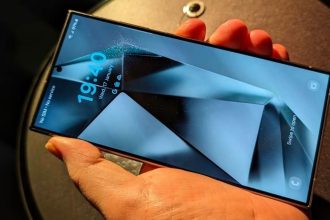If you’ve been out watching the solar eclipse, you looked at the sun and now your eyes hurt, there’s only one thing you need to know—seek medical attention.
Even looking at the sun for a few seconds without wearing solar eclipse glasses can cause solar retinopathy. It’s also called “eclipse blindness,” which means the retina cells have become damaged or destroyed. It can be temporary, but it can also cause permanent vision issues. It’s painless, with the effects only later becoming obvious.
According to All About Vision, the symptoms of solar retinopathy—which may not be instantly obvious—can include:
A blind spot in one or both eyes (this is one of the most common issues after an eclipse).
- Headaches
- Blurry or distorted vision
- Reduced visual acuity
- Light sensitivity
- A change in how you see colors
- Shapes look distorted
- Things look smaller than they are
What Can Cause ‘Eclipse Blindness’
“Exposing your eyes to the sun without proper eye protection during a solar eclipse can cause ‘eclipse blindness’ or retinal burns,” said Jeff Todd, president and CEO of Prevent Blindness, in an email. “This damage can be temporary or permanent and occurs with no pain. It can take a few hours to a few days after viewing the solar eclipse to realize the damage.”
Only solar eclipse glasses that meet the ISO 12312-2 standard should be used. If you used anything else to view the eclipse—from a drinks bottle to candy wrappers—and now have vision issues or a headache, you should seek help from a medical professional. Ditto sunglasses. “You cannot use sunglasses—single or multiple pairs—your smartphone, a camera, binoculars, or other optical viewers as these lenses are not safe for looking directly at the sun, which can increase the risk of damaging your eyes,” said Todd.
False Sense Of Security
A split-second glance at the sun is unpleasant, but it will not permanently damage your eyes. During a two-and-a-half-hour solar eclipse, people tend to let their guard down and, cumulatively, rack up too much time accidentally glancing at the sun. “Someone may make repetitive glances at the various stages of the eclipse and, once the event is over, that person may have cumulatively looked at the sun for minutes—far exceeding the safe viewing time,” said Aaron Zimmerman, O.D., clinical professor at The Ohio State University College of Optometry.
“Photophobia” is the natural aversion to looking at the sun. It makes you squint whenever you look at something in the general direction of the sun. “The photophobic response does not go away, but humans can overcome the aversion to light response and willfully look at the eclipse,” said Zimmerman. Unfortunately, without proper eye protection, viewing the eclipse can cause permanent damage to the retina.”
‘Diamond Ring’ Dangers
The same risks exist for those who traveled to the path of totality and experienced the total solar eclipse. That’s because most of the events were partial phases—exactly as the rest of North America saw. Inside the path of totality, it’s necessary to wear eclipse glasses at all times except during totality when the moon blocks all of the sun. If you didn’t put your eclipse glasses back on as soon as the sun appeared, you may have dazzled your eyes or worse.
However, if all you did was look at the “diamond ring” for a few seconds before looking away, you’re probably fine. “The diamond ring effect can be enjoyed for five to 15 seconds safely before resuming filter use,” said Dr. Ralph Chou, professor Emeritus at the University of Waterloo’s School of Optometry & Vision Science in Ontario, Canada and a world-renowned expert on eclipse eye safety, in an email. “The physics tells us this exposure time is not long enough to reach the damage threshold exposure level for photochemical injury to the retina.”
Wishing you clear skies and wide eyes.
Read the full article here




